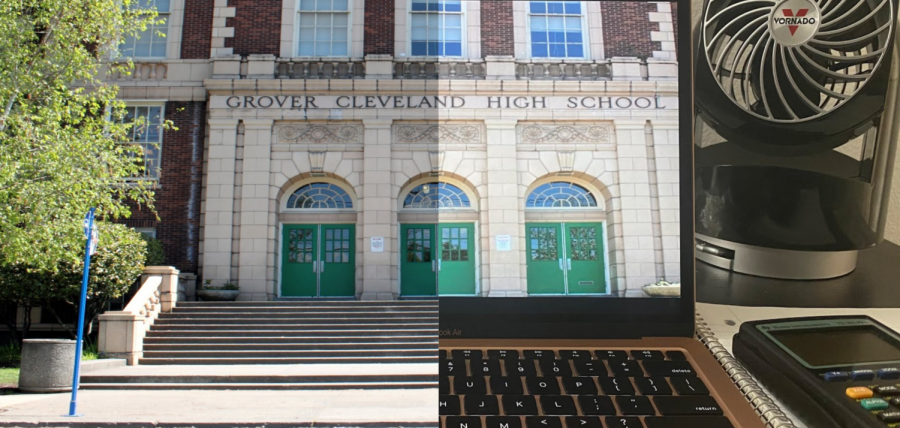Should We Really Be Reopening Schools?
Clarion photo Cody Ho
Online vs In-person
April 9, 2021
Since the precipice of the pandemic, there has been a national discussion surrounding the return of students to in-person learning. Given the recent downward trend in new cases, Oregon has announced that it will return to “hybrid” learning, meaning that students will rotate out certain days to minimize interaction. This has garnered criticisms from both students and parents, echoing concerns about whether or not a return to in-person learning will exacerbate the virus’ spread. Those who support a return cite that schools provide stability and benefits to many disadvantaged students. Both sides have merit, but there are clear advantages to safely returning to in-person learning that should be recognized.
The main concern individuals pose is the risk associated with COVID-19 affecting students, their families, and educators. Many schools in the PPS system are poorly ventilated, and some lack the space needed to effectively socially distance. At first glance it would seem that schools should be superspreader-type locations. However, numerous studies have shown that, in communities that have either partially opened schools, or fully opened schools, there is no discernable increase in the spread of COVID-19. This article from NPR cites numerous studies. Among them, a paper from Spain shows that, after opening schools, the country’s spread of COVID-19 remained on the same downward trajectory it was on prior to the reopening. What’s more is, the rate of spread inside schools seems to be minimal, with 87% of reported cases not spreading outside of a single person. The author of the study, Enric Alvarez, stated himself that schools have no “epidemic-changing effects … .” These studies however, were in schools that featured mask wearing for students over the age of 6, effective ventilation (which, as stated earlier, many older schools in PPS lack), and proper social distancing of at least six feet. Regulations in the US vary from state to state, but it’s likely that in Oregon we would see similar precautions.
That, though, is just one study. Researcher and head of Insights for Education Dr. Randa Grob-Zakhary stated that trends surrounding COVID-19 and schools are inconsistent, saying, “It’s not that closing schools leads to a decrease in cases, or that opening schools leads to an increase.” There have been noted instances in which the opening of a given school has led to a small outbreak of cases. Cases in the United Kingdom rose shortly after the reopening of schools, but there have been examples of the exact opposite happening in countries like Japan, Thailand, and South Africa.
There is a sense of urgency to be had with getting students back to school. Some students get the majority of their meals from school. Others rely on school for a safe place to be during the day. For some, it’s their only means of meaningful social interaction. The reasons vary, and some of them are more valid than others. For instance, a study from the National Institute of Health found that students prone to maltreatment or physical abuse at home lose contact with a vital medium of communication when schools close, and such cases may increase.
As this piece is being published, PPS has already committed to sending select students back to a hybrid model of learning. All things considered, this is probably the safest option.
Certain populations of students need school in a way that more advantaged students wouldn’t understand, and giving them the opportunity to re enter that space in a safe manner should be a major priority.










